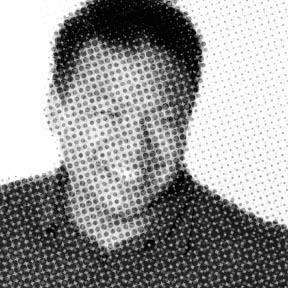
I'm in Shanghai this week. The first time ever for me being in China, and the strangest part about being in Shanghai, is that it isnt so strange at all. Shanghai being the most cosmopolitan of all Chinese cities, it kind of feels like I stepped off the plane into the Cupertino borough of New York. More on that later.
While I was on the plane ride over, I was lucky enough to read an advance copy of the new Chris Anderson book,
The Long Tail. I got this copy as part of a
Long Tail experiment Anderson ran on his blog, where he is having both mainstream media and bloggers write about his book.
Between being on vacation and flying to Shanghai, the advance copy turns out not to be so advance (the book has already hit the Amazon Top Ten), but here are my impressions:
Anderson, who is the editor-in-chief of
Wired magazine, coined the term Long Tail in the
pages of that magazine to describe a behavior pattern he and others were noticing with online commerce. As I poorly described it last year after
I missed hearing Anderson speak at IDEO (darn! darn!!), Long Tail thinking basically says that with global connectivity, the effect of all the fringes and niches may well be greater than the mainstream -i.e. the area under the long tail of the popularity curve = the area under the mainstream part of it.
For online retailers, who could offer many more choices than a physical store, the sales from the niches -the long tail- became as important as sales from the mainstream. In a nutshell, the Long Tail describes an economics of abundance: What happens when everything you (or, your customer) ever wanted is available? The results are a very different landscape of behavior than 'normal' economics, which assumes scarcity of resources, rather than abundance.
If you're a recent reader of Wired magazine, most of what Anderson decribes in the book is
very familiar, since through the magazine, his
Long Tail blog, and now the book, he has been able to try out different riffs of this idea. The book gathers alot of data and case studies seen elsewhere in Anderson's sphere of publishing. There are new bits too, but nothing that particularly stands to my jetlag addled brain.
Anderson's gesture in getting bloggers to write reviews of his book is of course a fun DIY example of the long tail in motion. The availability of internet tools has allowed anyone to become an information aggregator, and to build small but interested audiences on practically any subject available.
I've been regularly using the lens of Long Tail to look at how easy it has become to turn
dreams into commerce: everything from
Neighborhoodies creating value in their goofs to
Freddy&Ma co-creating the wave of mass customization with their custom high-end handbags.
Another example closer to the
thisislarry media empire is the fact that somehow, I get over twenty hits a day on my
Eichler Homes lens at Squidoo, squeaking it into the site's top 100 list. I dont even know 20 people who talk to me in person every day! My close neighbors on this list include diverse and completely unrelated topics as Singapore Math, Fly fishing, and Danny Elfman. Each of our spots in the tail is relatively small, together we take up quite a lot of room.
While The Long Tail is being marketed as an pop business / economics book, I found it to be just as persuasive as a pop science book. Like any
good observation of the universe, Long Tail thinking seems to describe a little bit of everything. Anderson mentions one of my favorite, John Robb's compelling and
very scary application of Long Tail thinking to explaining and predicting the shape of terrorism and global warfare.
The Long Tail is an enjoyable read, thanks to Anderson's conversational style, and the subject is definitely worth getting to know, especially if you happen to want to live in the 21st century. Along with
Dan Pink's A Whole New Mind, I think this is a book that I will look back at in ten years and not be able to remember what the world was like, before reading it.
photo: side street, on the way to the office in ShanghaiLabels: travel







